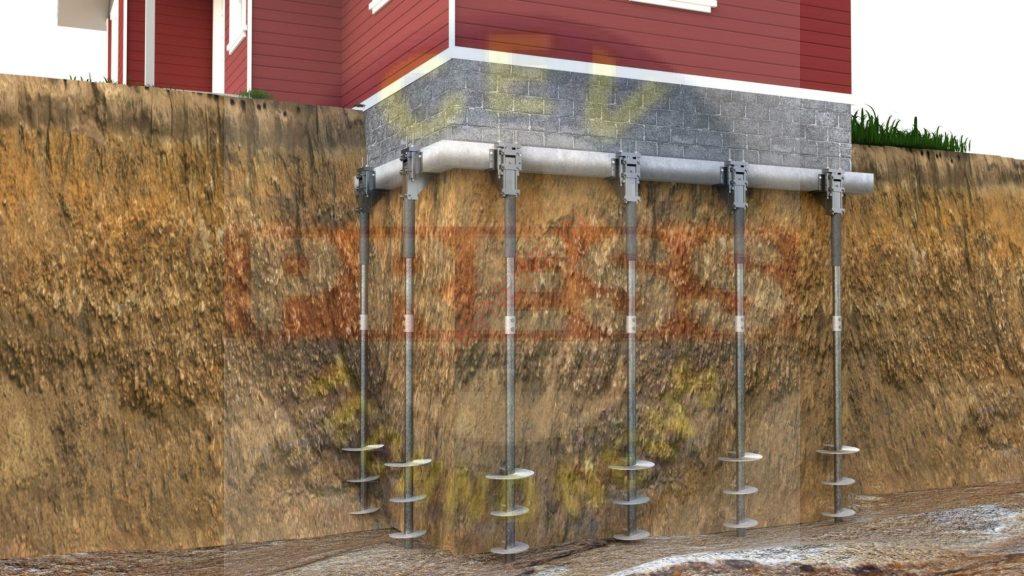SOIL STRUCTURE AND THEIR TYPES-ALL YOU NEED TO KNOW
The arrangement of soil particles and their aggregate into certain defined patterns is called structure. The primary soil particles and, silt and clay usually occur grouped together in the form of aggregates. Natural aggregates are called peds, whereas clod is an artificially formed soil mass.
The structure of soil is formed by the geometrical arrangement of soil particles with respect to each other. Different soils contain different structures and each structure gives us the properties of particular soil.
The wetting/drying and freezing/thawing action as well as root or animal activity push particles back and forth to form aggregates. Decaying plant residues and microbial byproducts coat soil particles and bind particles into aggregates. Adsorbed cations help form aggregates whenever a cation is bonded to two or more particles.
Types of Soil Structures
There are six different types of soil structures and they are as follows.
- Single grained structure
- Honey comb structure
- Flocculated structure
- Dispersed structure
- Coarse grained skeleton
- Clay matrix structure
- SINGLE GRAINED STRUCTURE
This type of structure will be found in the case of coarse grained soil deposits (see Fig-1). When such soils settle out of suspension in water, the particles settle independently of each other. The major force causing their deposition is gravitational and surface forces are too small to produce any effect. There will be particle-to-particle contact in the deposit. The void ratio attained depends on the relative size of grains.
- HONEYCOMB STRUCTURE
This type of structure is associated with silt deposits. When silt particles settle out of suspension, in addition to gravitational forces the surface forces also play a significant role. When particles approach the lower region of suspension they will be attracted by particles deposited as well as the neighboring particles leading to the formation of arches. The combination of a number of arches leads to the honeycomb structure as shown in Fig-2. As the deposit has high void ratio, when disturbed as in pile driving, there will be large reduction in volume due to breakdown of structure.
- FLOCCULATED SOIL STRUCTURE
Flocculated structure is present in clay particles which contains larger surface area. These are charged particles which have positive charge on the edges and negative charge on the face of the particle. When there is net attractive force between the particles, then positive charged particles attracted towards negatively charged faces which results the formation of flocculated structure. Clay present in the marine area is the best example for flocculated structure. Salt present in the marine water acts as electrolyte and reduces the repulsive force between the particles which leads to the formation of flocculent structure. This type of soils has high shear strength. Because of edge to face orientation void ratio is high in this type soil and water content also optimum but they are light in weight. The compressibility is very low for this type of soils.
- DISPERSED STRUCTURE
In the case of dispersed or oriented structure, the particles will have face to face contact (see Fig-4). This type of formation is due to net electrical forces between adjacent soil particles at the time of deposition being repulsive in nature. This type of structure is common in fresh water deposits.
Clay with flocculated structure will have relatively high void ratio. Remoulding of such soils or application of pressure as in compaction leads to slippage of particles resulting in dispersed structure with decrease in void ratio. Consolidation also tends to reorient the particles to form dispersed structure with decrease in volume.
- COARSE GRAINED SKELETON STRUCTURE
The coarse grained skeleton structure can be found in the case of composite soils in which the coarse grained fraction is greater in proportion compared to fine grained fraction. The coarse grained particles forms the skeleton with particle to particle contact and the voids between the particles will be occupied by the fine grained particles.
- COHESIVE MATRIX STRUCTURE
The cohesive matrix structure can be found in composite soils in which the fine-grained fraction is more in proportion compared to coarse grained fraction. In this case the coarse grained particles will be embedded in fine grained fraction and will be prevented from having particle to particle contact. This type of structure is relatively more compressible compared to the more stable coarse grained skeleton structure.

